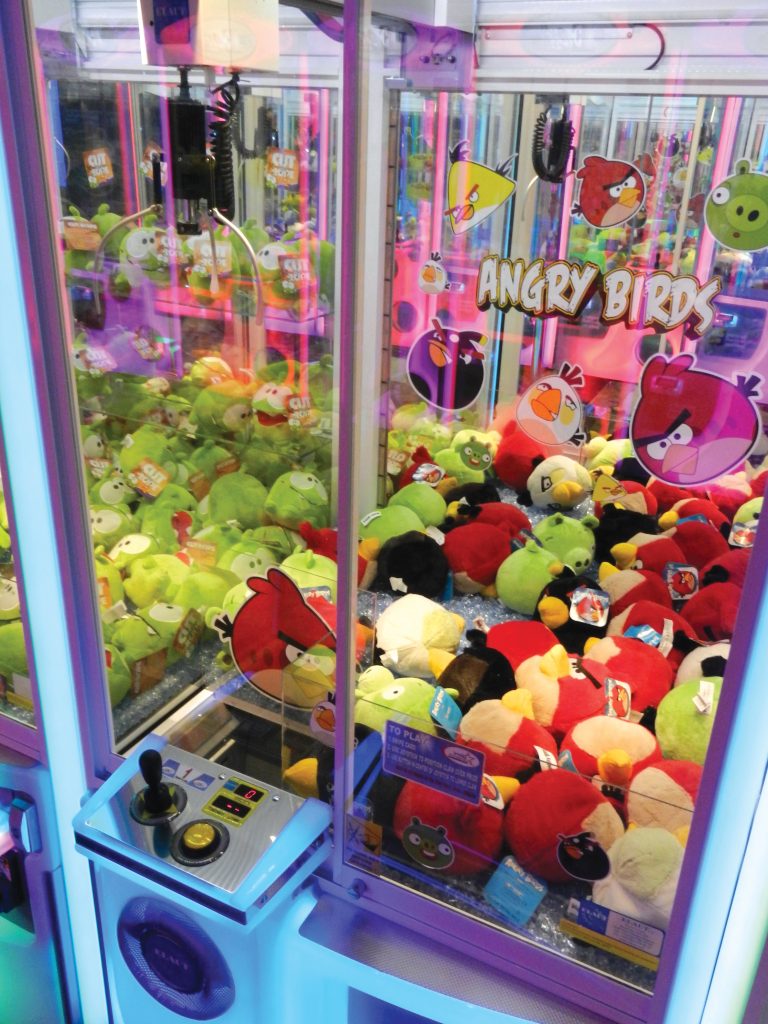Redemption: Is It Art or Science?
The Balance that Creates Success Starts with the Fundamentals
By George McAuliffe, Chief FEC Strategist, Redemption Plus

We at Pinnacle make our living working with clients who are new to the redemption game business. While our job is to flatten the learning curve and help these new operators avoid mistakes, some areas are steeper than others. A common trouble spot is the merchandise purchasing process and the economics that go with it.
Simplify to Understand
There are two critical numbers in redemption: sales and, on the expense side, cost of sales. These are interactive. If I always buy the cheapest merchandise and “save” 10 percent, have I really accomplished anything if my cost of sales is 22 percent instead of 18 , or if my resulting sales are 10 percent less?
A common philosophy is that “I need multiple merchandise vendors to keep them honest.” Perhaps that’s true for the higher-volume game rooms, but certainly not for mid- and lower-volume facilities. Consolidating vendors –– even going to a single vendor –– can reduce administrative costs while improving buying power, pricing, and influence. It also makes merchandise easier to control. Less is often more. When working with our customers, my goal is to simplify the details so that we execute a few things well.
Beware Broad Claims
We frequently hear from customers that XYZ vendor says that they can “save me 20 to 30 percent.” This is usually misleading. Most readers know that we have worked with Redemption Plus for many years (now, they are now a client of ours), and we’ve heard the claim many times. When we’ve compared, we find that we’re cheaper on some items, and the competition is cheaper on some others. True differences, if any, are usually small across the product line.
A typical tactic is to quote one vendor’s retail price against the calling salesman’s case or quantity price. Putting ethics aside, do you really save anything if you are forced to carry more inventory with case purchases? Keep in mind this increases your risk of being stuck with dead inventory as most vendors don’t allow liberal returns.
Apples to Apples
When your first priority is controlling your merchandise cost of sales, item price is only one component of the calculation. What about size? Is Vendor A’s 2” eraser 1/8” thick while Vendor B’s is ¼” (that’s a 100 perent difference on the material side and huge in customer value perception). How about plastic thickness? Is that plastic whistle from Vendor A going to break in the customer’s mouth on the way home? What about packaging? Is vendor A’s item without packaging going to sell at the same markup as Vendor B’s which comes in attractive packaging?
How about freight? Some vendors include freight in their cost, others charge separately. Others apply a surcharge. This is a huge factor often accounting for 10-15 percent of the cost of goods.
Here’s a huge intangible: return policies. A liberal return policy can save the operator a fortune in inventory and cost of sales. Buying “mistakes” don’t have to be blown out at lower margins and displays don’t stagnate or clog up the storage room.
More Intangibles
Other factors that have real costs, but don’t show up in an item price comparison, include:
Back Orders: These can be very costly because you don’t get what you order when you need it (and often it’s no longer needed by the time it finally arrives). The best vendors have real-time inventory available at the time of purchase so you know what you are getting and when.
Safety Testing: With today’s regulatory standards on content and other safety issues, this is a huge intangible. All industry vendors have testing programs, but some invest more than others, eliminating or delivering more risk to you and your customers.
Controlling Inventory: Losses through miscounts/ data entry errors become cost of sales expenses. In the 21st Century game room we have redemption POS units designed to help control the process. Some vendors fully integrate with industry redemption POS units, and offer a suite of control options, others don’t.
Controlling Theft: If we carry redemption merchandise that our customers want, our employees will want it, too. Keeping people honest is a challenge for FEC operators. Theft goes straight to the cost of sales line. A solid system as described above is worth its weight in gold, but can’t be found in the item price comparison.
Overhead/Management Costs: This is the greatest of the intangibles. When management is spending time on the phone, talking to vendors, reviewing multiple catalogs and so on, there is always something else they are not doing. My priority is to put my managers on the sales floor, talking to customers, learning what they want, and leading the staff.
The big takeaway here is that item price matters, but we can’t allow it to become the “tail that wags the redemption dog,” the dog itself being cost of sales control and bottom line profits.
George McAuliffe has created and operated family entertainment centers from 2,000 to 150,000 square feet as a corporate executive, entrepreneur and consultant. He’s President of Pinnacle Entertainment Group and leads the company’s strategic advisory team. George, recently moved back “home” to the Jersey Shore with his wife Julie, has a passion for passing along what he’s learned in the fun business to the new generation of operators and suppliers.
Readers can visit grouppinnacle.com for more information or contact George at georgemc@group
pinnacle.com; phone: 314-422-7197.

